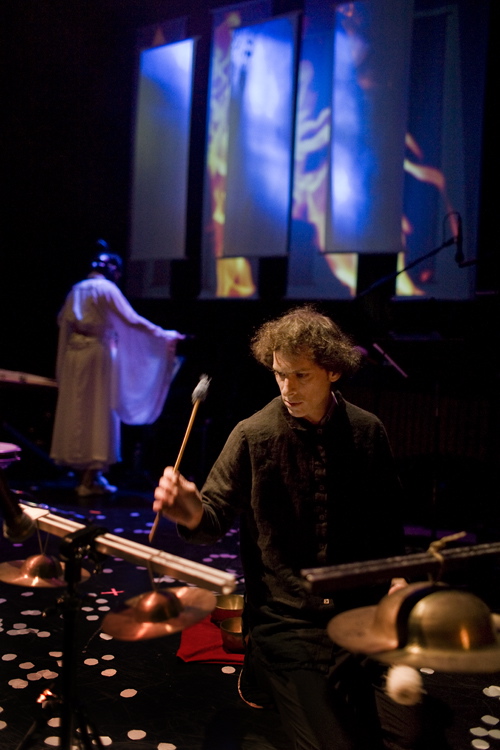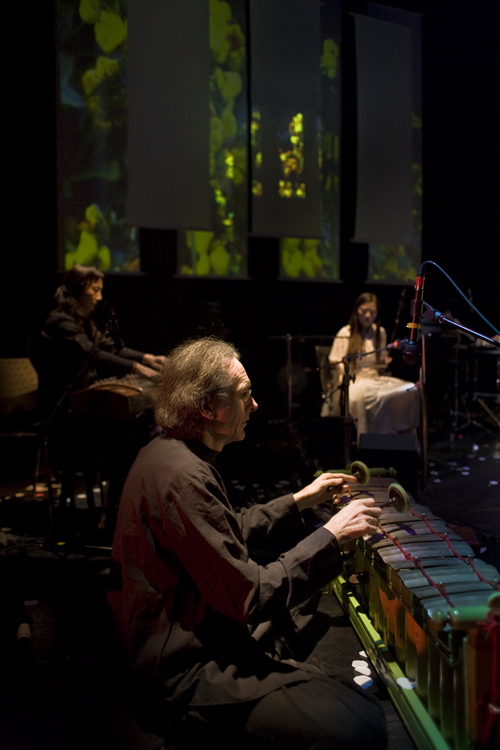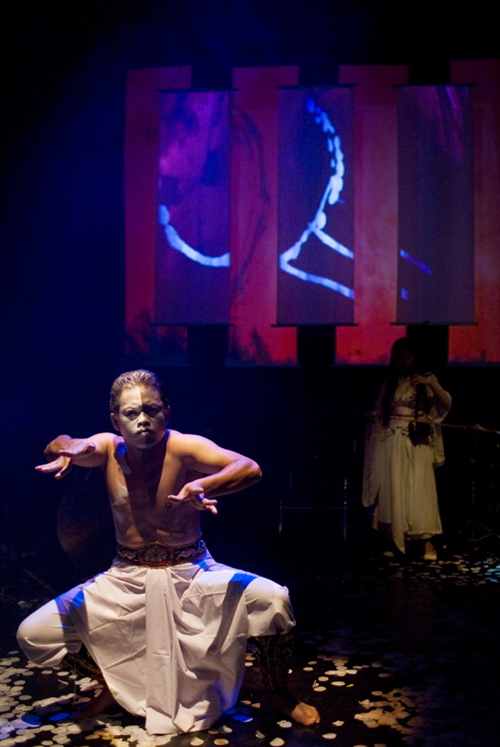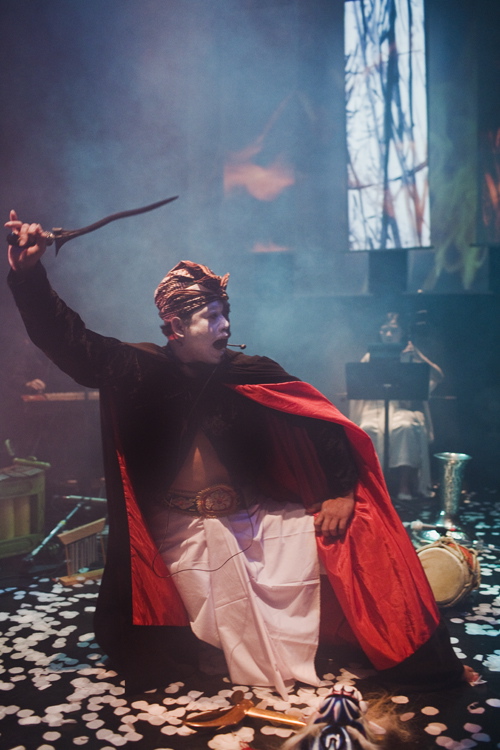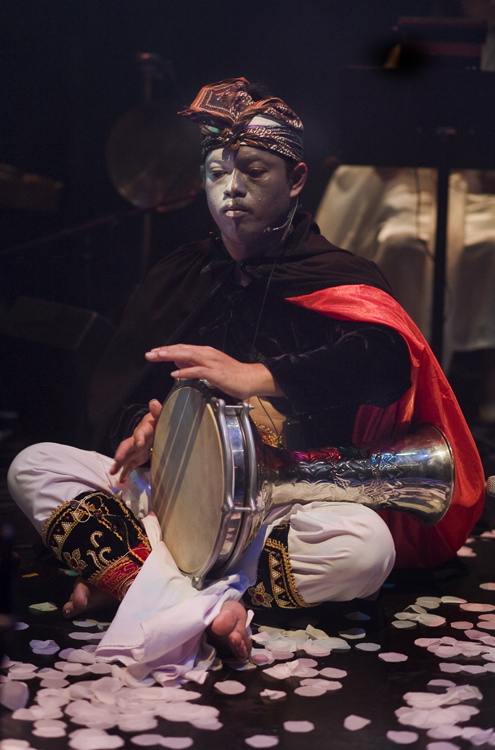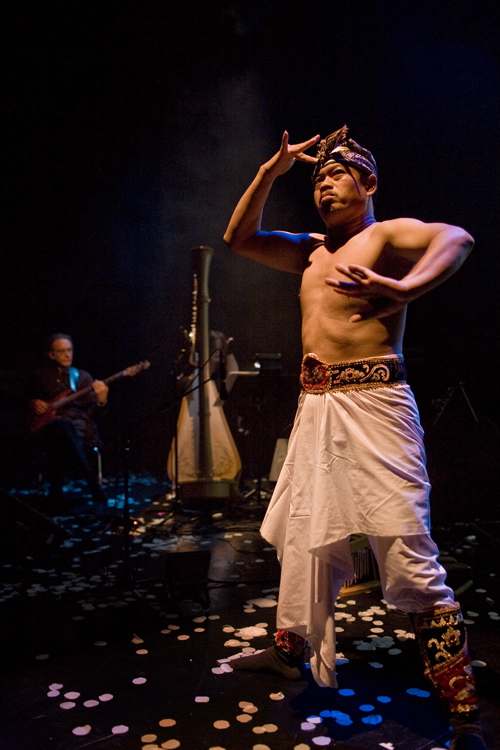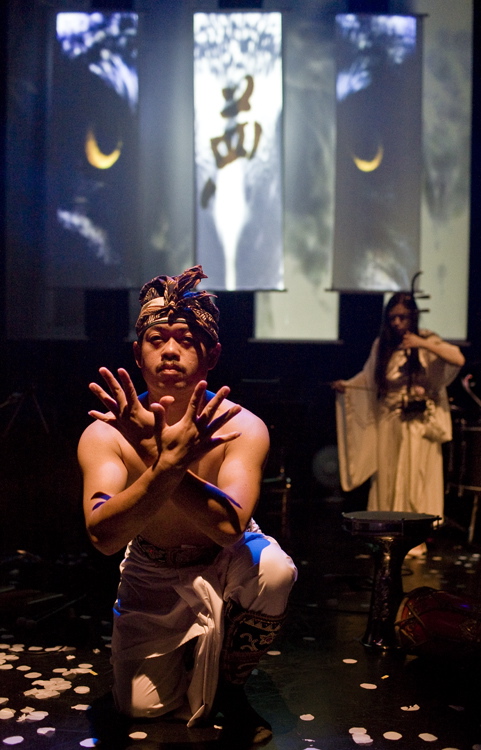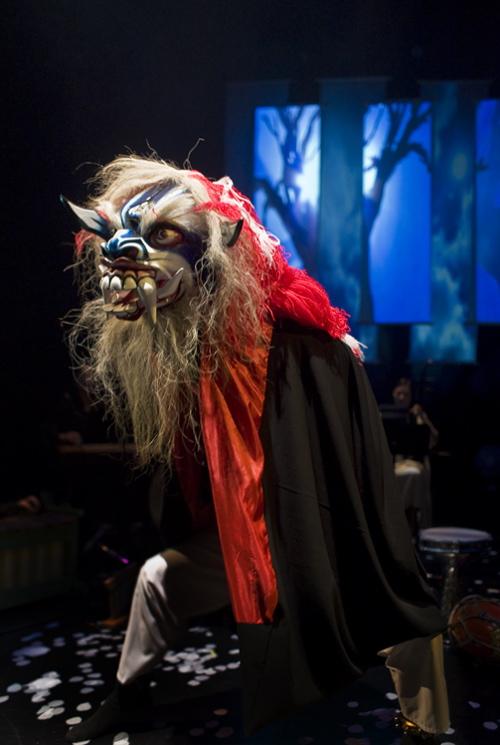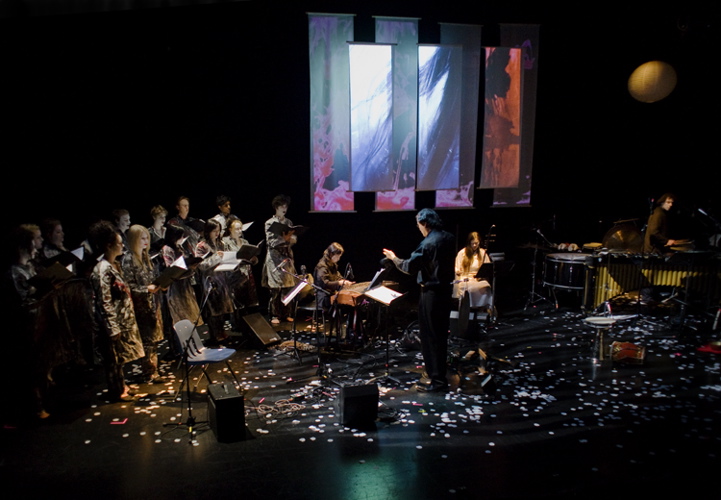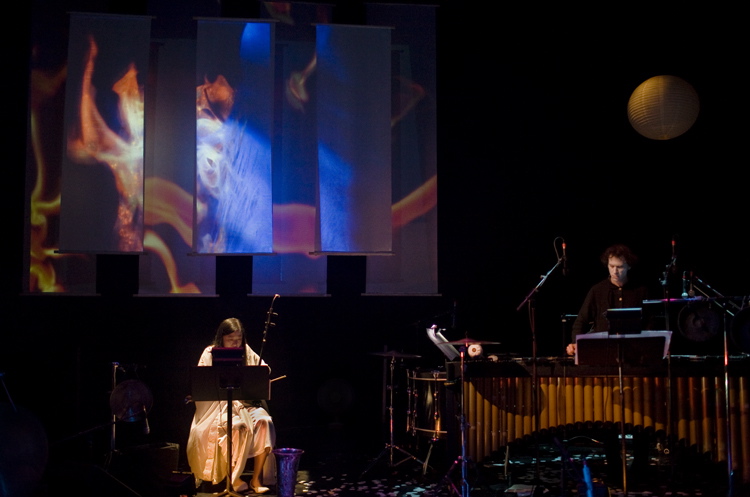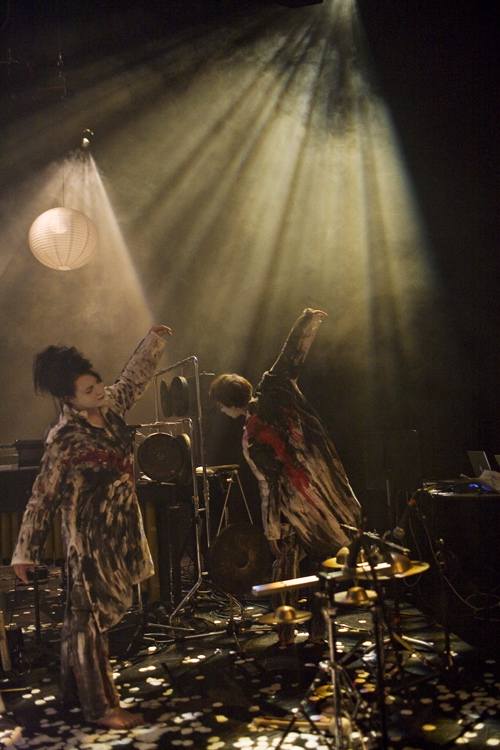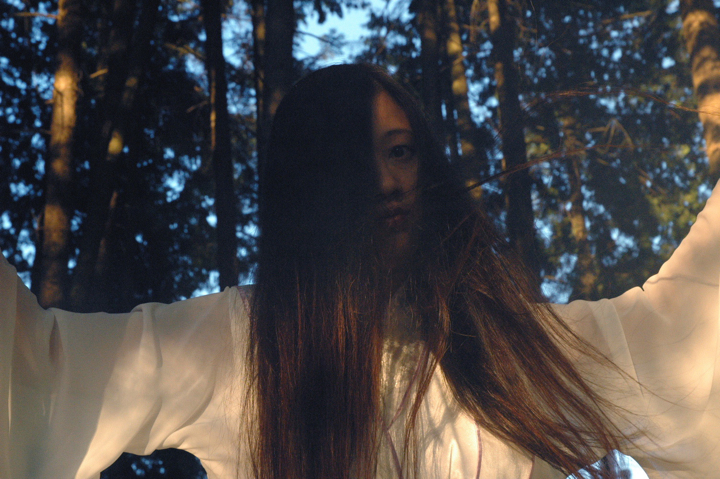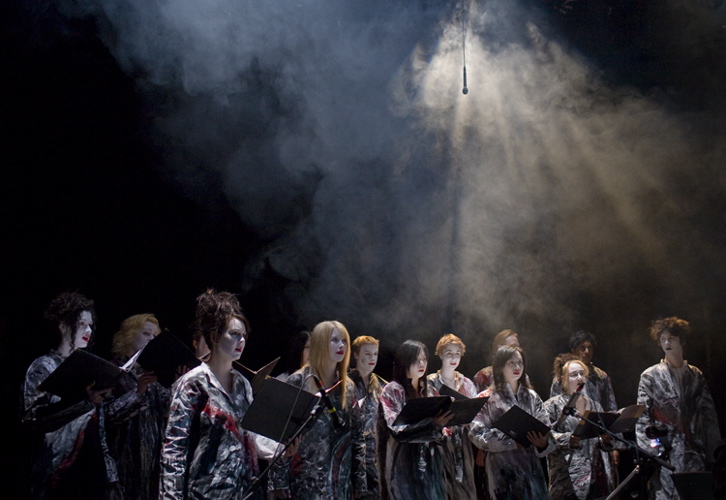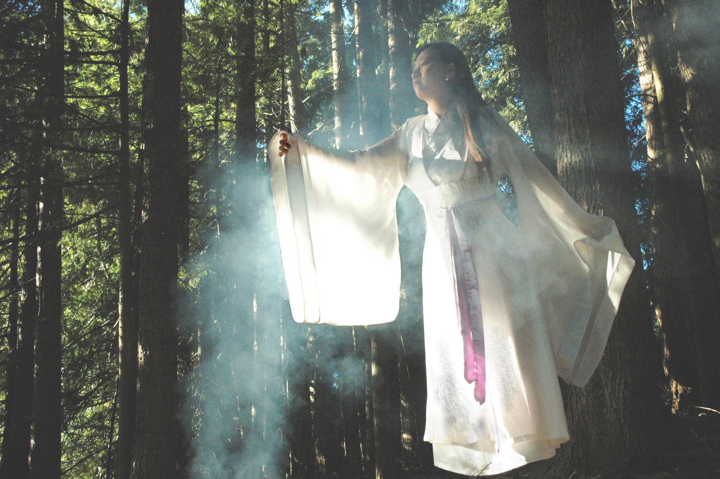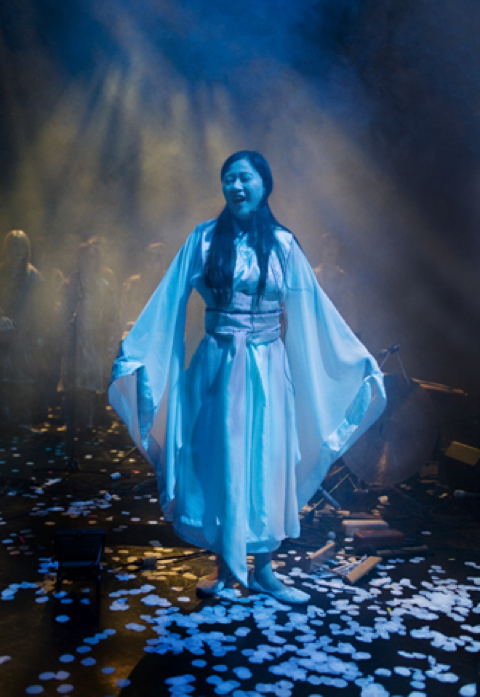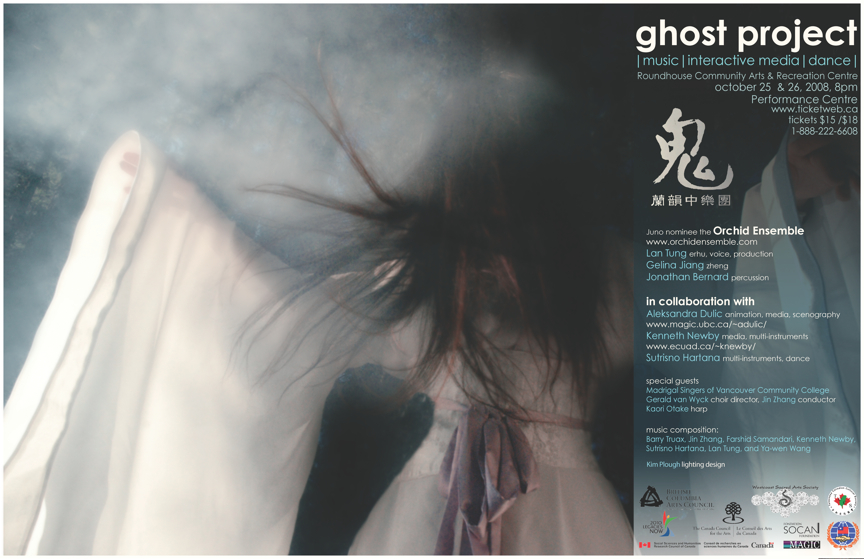 Ghost Project 鬼域
Ghost Project 鬼域
music/interactive media/dance
Inspired by a shared curiosity of the after-life in different cultures
The music in The Ghost Project combines the modes, rhythms, and interlocking patterns in Indonesian gamelan music, with the lyrical phrasings and breath in Chinese music, and the harmonies and precision in western music. Animated visuals and Chinese calligraphy are projected on seven screens to provide a mysterious backdrop.
Ghost Project trailer
Created by Aleksandra Dulic as a promo clip for the Ghost Project. The music is performed by the Orchid Ensemble (Lan Tung – erhu, previous member Gelina Jiang – zheng, and Jonathan Bernard – percussion), with special guests Sutrisno Hartana – vocal and percussion, and Kenneth Newby – gender. The music is entitled Suksma, composed by Sutrisno Hartana.
The videos were recodred at the premiere in Oct, 2008. The zheng was performed by previous member Gelina Jiang
Collaborators
animation/media performance/scenography/costume design Aleksandra Dulic,
media arts/ multi-instruments Kenneth Newby,
Javanese dancer/multi-instruments Sutrisno Hartana
Guest performers (at the premiere) – harpist Kaori Otake; and Madrigal Singers of Vancouver Community College,
directed by Gerald van Wyck and conducted by Jin Zhang
Composers – Sutrisno Hartana, Kenneth Newby, Farshid Samandari, Barry Truax, Lan Tung, Jin Zhang, Yawen Wang
Lighting designer – Kimberly Plough
Producer – Lan Tung
Partners for the premiere – The Roundhouse Community Centre, Taiwanese Canadian Cultural Society, Vancouver Community College, and Westcoast Sacred Arts Society.
Sponsors – the Canada Council’s Inter-Arts program, BC Arts Council, Arts Now, the SOCAN Foundation, Taiwan’s Overseas Compatriot Affairs Commission.
Suksma – Sutrisno Hartana (2008)
Suksma in an old Javanese language that means spirit, soul, abstract, maya. It refers to the world of spirit that is unseen. There are two types of suksma i.e.; langgeng (peace) and nglembara (wandering spirits or ghosts). Usually the suksma langgeng refers to the peaceful, and in contrast suskma nglembara refers to the ghostly. The concept of birth, life, death, birth, live, death is a good example of cyclical journey of suksma. Using the deep feeling and musical intensity that is taken from Chinese Erhu, Zheng, Marimba, Gender, and percussions, this music is meant a try to interact with the spirit.
Ghostly Moon – Barry Truax (2008), BC Arts Council Commission
Ghostly Moon is a music theatre work inspired by the tradition of Chinese ghost stories, many of which are centred on a female ghost who wishes to return to life. In this case, the story combines elements and poetry from many different sources from the 16th to the 18th centuries, and portrays the ghost as a wronged woman who returns for vengeance. However, the young scholar she visits is the brother of the man who betrayed her, and once she hears his voice she realizes this is her true lover.o return to life she must join with him as his wife, which is the outcome of many of the traditional Chinese tales. The disembodied theatrical effects from traditional Chinese drama suggested a contemporary treatment with electroacoustic techniques.
Ghosts of Living – Farshid Samandari (2008)
Ghosts of the living depicts characters who breathe, act, and haunt the well-being of others as ghosts. Piece focuses on paradoxical and ironic dual nature of such beings. Ghosting acts as a function that binds distinct melodic modes and tonal centres to form a composite modal system, it also creates a framework for the polyrhythm.
Ghost Mind – Jin Zhang (2006), Canada Council Commission
It is based on four Chinese characters: meng (dream), xu (blur), piao (float), yi (suspect), representing different images of ghosts in Chinese tradition. Starting with the first character, each section of the piece adds a new layer representing the next characters.
“Ghost Mind” 選自【鬼域】(Ghost Project) 跨界音樂會,於2008年在溫哥華首演。這首樂曲是由蘭韻中樂團委託作曲家張進創作,加拿大藝術評議委員會贊助,藉由四個字-夢、虛、飄、疑-來描寫鬼的不同形態。
Life Death Tears Dream – Yawen Wang
In a set of four vignettes, based on the four short poems by Taiwanese contemporary poet Hsiung Hung, the piece completes itself as a song cycle – both musically and philosophically. This is the first two movements, performed continuously in cycles: life-death-life-death-life. The poetic ideas in the text inspired the musical structure and evocates Gamelan music. This piece was commissioned by the Egret Music Centre to perform with the Orchid Ensemble.
生死淚夢-選自【鬼域】多媒體音樂會,蘭韻中樂團, 董籃-二胡,江革玲-古箏,Jonathan Bernard-打擊樂。溫哥華社區學院合唱團,張進指揮,王亞雯作曲
Eleithyia – Kenneth Newby, choreography/dance Sutrisno Hartana
Written as part of the Sirens cycle compositions dedicated to the divine female across cultures, this particular piece of music is for the Cretan goddess of childbirth and midwiving and was composed after the birth of my son Ashlan. The work is in A/B/A form with a rhythmic cycle of 16 + 20 + 12 for A and 8 + 6 for B. The marimba/harp, erhu and bass guitar parts share three pitches in common but deviate in two others to create a delicious melodic tension characteristic of some forms of Javanese music. Interlocking parts characteristic of Balinese kotekan technique are played between the marimba, harp and bass guitar. The video composition makes use of live visual processing to transform the live performer into ghosts beyond the screens.
選自【鬼域】多媒體音樂會,蘭韻中樂團, 董籃-二胡,江革玲-古箏,肯納斯‧紐比作曲。

